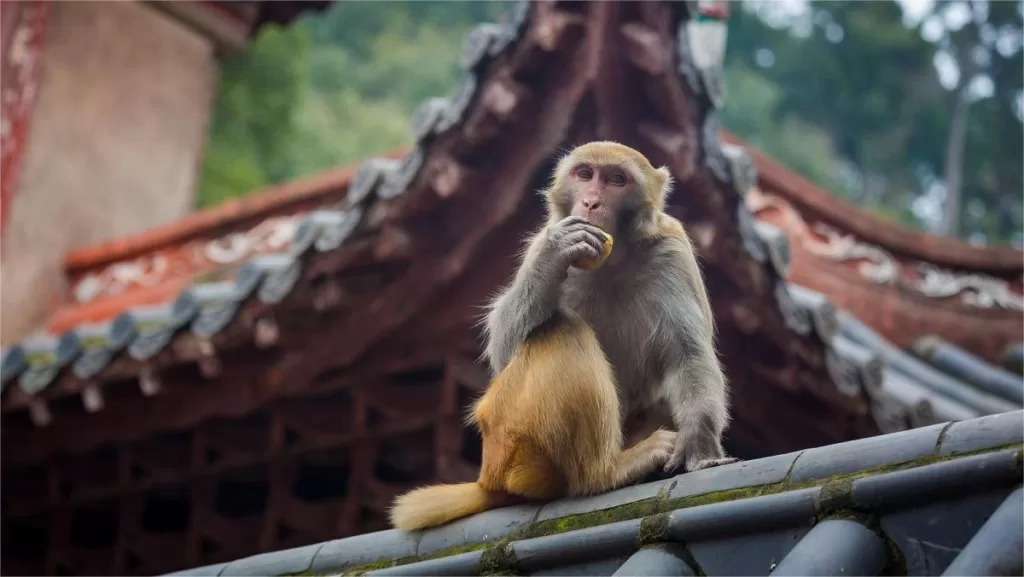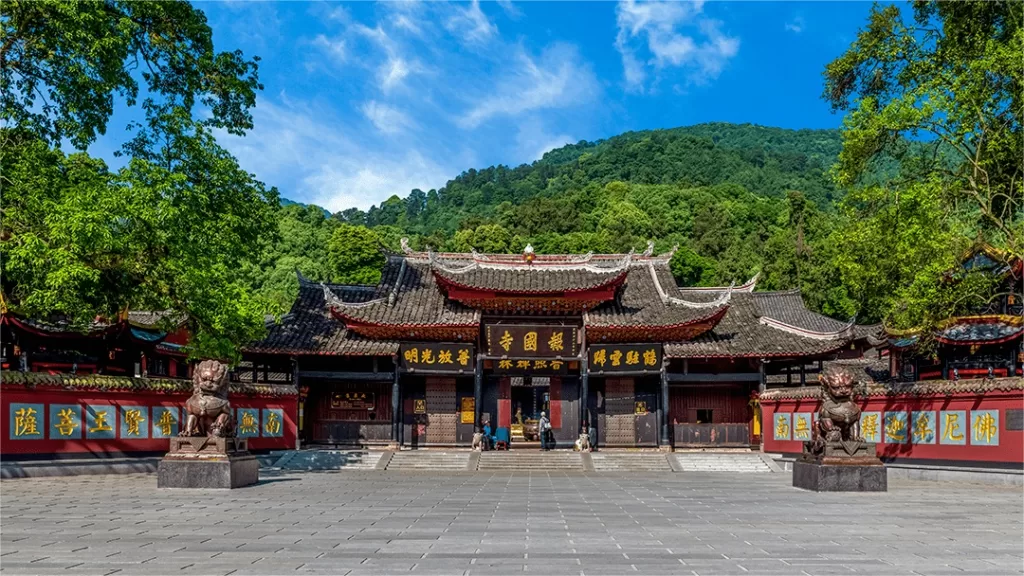Les singes du mont Emei - l'un des points forts de la montagne


Mont Emei, located in the southwestern part of China’s Sichuan Province, is one of the country’s most renowned and sacred mountains. Known for its stunning natural beauty, rich biodiversity, and cultural significance, Mount Emei attracts countless visitors each year. Among its many fascinating features, the presence of monkeys is one that captures the attention and curiosity of tourists and nature enthusiasts alike.
Breed: The monkeys found on Mount Emei are known as Tibetan macaques (Macaca thibetana) or simply Emei macaques. They are a species of Old World monkeys that inhabit various regions of China, including the mountainous areas of Sichuan, Yunnan, and Tibet. Emei macaques are particularly adapted to the rugged terrain and dense forests of Mount Emei.
The presence of monkeys on Mount Emei dates back centuries, and they have become an integral part of the mountain’s ecosystem and cultural heritage. Here is a detailed description of monkeys on Mount Emei:
Physical Appearance: Emei macaques are medium-sized monkeys with a robust build. They have a fur coat that varies in color from yellowish-brown to dark brown or gray. Their faces are adorned with distinctive pink or reddish skin, and they have a long tail, which helps them maintain balance while moving through the trees.
Behavior and Social Structure: Emei macaques are highly social animals and live in troops or groups ranging from a few individuals to over a hundred. These troops are organized hierarchically, with dominant males leading and protecting their group. Within the troop, individuals engage in complex social interactions, including grooming, playing, and forming alliances. Young macaques are particularly playful and often engage in energetic games to develop their physical and cognitive abilities.
Feeding Habits: The diet of Emei macaques is primarily omnivorous. They consume a wide range of plant material, such as fruits, leaves, flowers, and bark, as well as insects, eggs, and small vertebrates. Monkeys often forage in groups, utilizing their dexterous hands and keen eyesight to search for food in the forest canopy and on the forest floor.
Habitat and Range: Mount Emei provides an ideal habitat for the Emei macaques, with its dense forests, cliffs, and abundant food sources. These monkeys are adapted to live in montane and subalpine regions, ranging from approximately 1,200 meters (3,900 feet) to 3,800 meters (12,500 feet) above sea level. The mountain’s diverse vegetation, including coniferous and broadleaf forests, bamboo groves, and alpine meadows, offers a variety of resources for the macaques.
Conservation and Cultural Significance: The Emei macaques hold immense cultural and religious significance in the region. They are considered sacred animals in Buddhist beliefs, as they are believed to be the reincarnation of disciples of the Bodhisattva Samantabhadra. As a result, they are protected by law, and harming or killing them is strictly prohibited. The monkeys’ presence on Mount Emei enhances the spiritual experience for Buddhist pilgrims who visit the mountain’s numerous temples and monasteries.
Interactions with Visitors: Visitors to Mount Emei have the opportunity to observe and interact with the Emei macaques. However, it is important to note that these monkeys are wild animals and should be treated with respect and caution. Feeding the monkeys is discouraged, as it can disrupt their natural feeding patterns and lead to aggressive behavior. Proper waste disposal is also essential to minimize human-wildlife conflicts and maintain the monkeys’ health.
Overall, the monkeys of Mount Emei, the Emei macaques, are fascinating creatures that contribute to the natural beauty and cultural significance of this revered mountain. Their presence serves as a reminder of the interconnectedness between humans and the natural world, highlighting the importance of conservation efforts to protect their habitat and ensure their continued existence for generations to come.
Autres attractions au Mont Emei

Temple de Wannian

Temple de Fuhu

Source d'eau chaude de Lingxiu

Temple de Baoguo